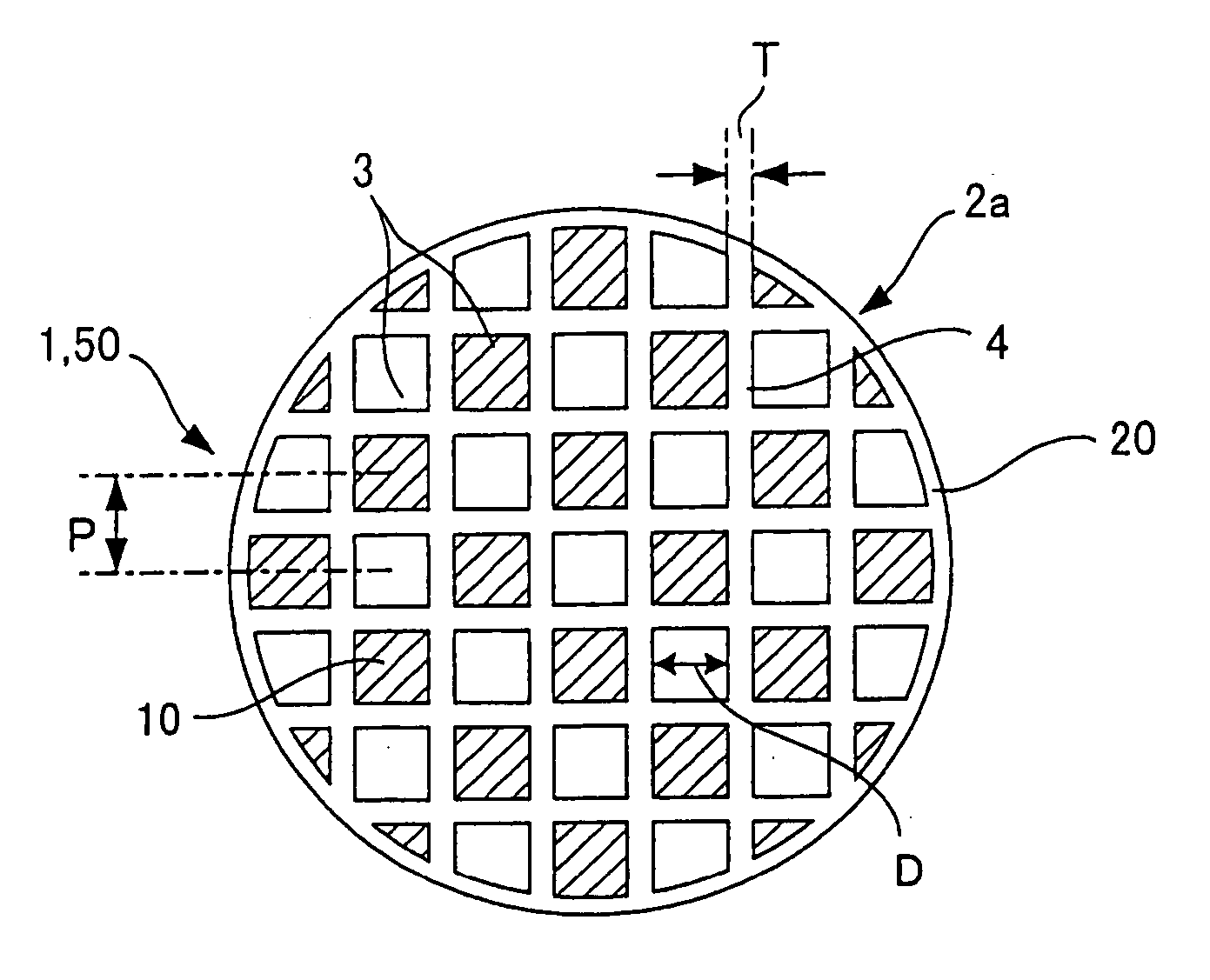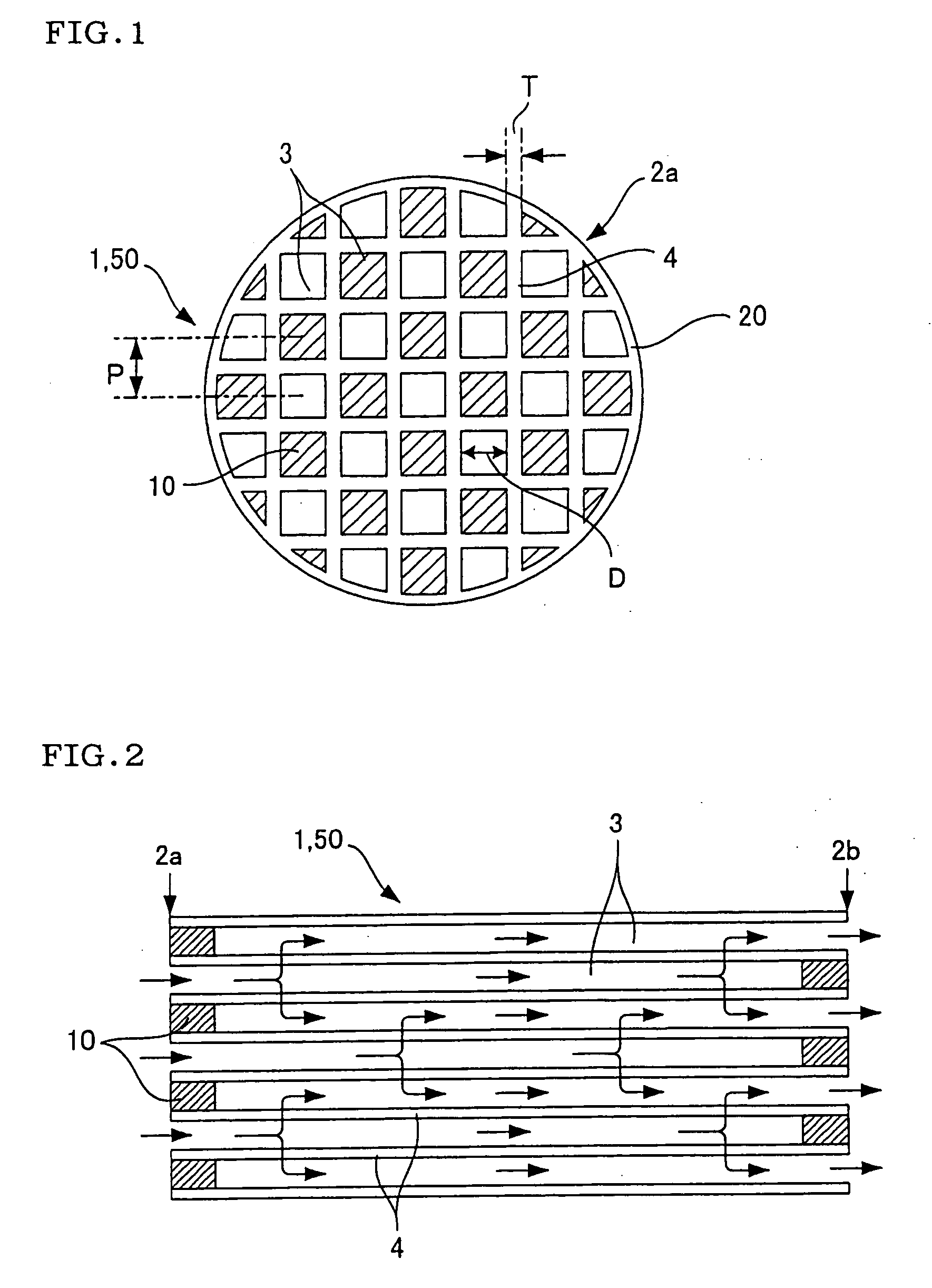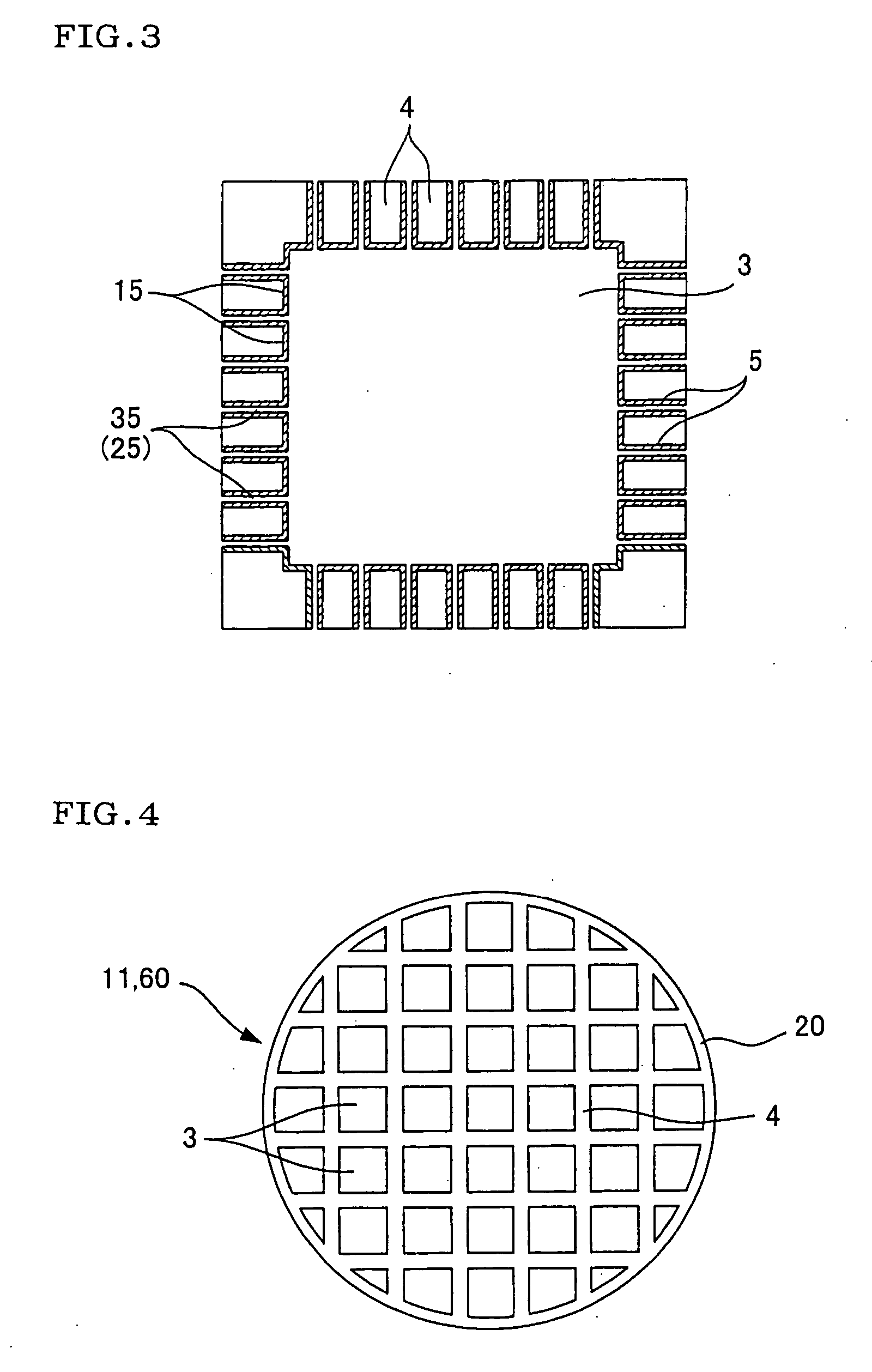Honeycomb structure and honeycomb catalytic body
a honeycomb and catalytic body technology, applied in the direction of catalyst activation/preparation, metal/metal-oxide/metal-hydroxide catalysts, machines/engines, etc., can solve the problems of increasing pressure loss, increasing arrival ratio, and increasing pressure loss, so as to improve purification efficiency and reduce pressure loss. , the effect of superior purification efficiency
- Summary
- Abstract
- Description
- Claims
- Application Information
AI Technical Summary
Benefits of technology
Problems solved by technology
Method used
Image
Examples
examples
[0100] The present invention is explained specifically below based on Examples. However, the present invention is in no way restricted to these Examples.
[0101] Pore diameters were measured by image analysis and an image maximum distance average was calculated. Specifically explaining, SEM photographs of partition wall section are observed for 20 visual fields each of (length×width=t×t) wherein “t” is the thickness of partition wall; then, in each visual field observed, the maximum straight line distance of pore is measured; an average of the maximum straight line distances of all the visual fields is calculated; the average was taken as “image maximum distance average”. The magnification of SEM photograph was 50. Also, pore diameter distribution was measured using a mercury porosimeter [Auto Pore III Model 9405 (trade name) produced by Micromeritics Co.], and standard deviation of pore diameter distribution (pore diameter distribution σ) was calculated.
[Porosity]
[...
examples 1 to 17
, Comparative Examples 1 to 3
[0110] A plurality of members selected from talc, kaolin, calcinated kaolin, alumina, aluminum hydroxide and silica were mixed as raw materials for formation of cordierite, in such proportions as to give a chemical composition of 42 to 56 mass % of SiO2, 0 to 45 mass % of Al2O3 and 12 to 16 mass % of MgO. To 100 parts by mass of the resulting mixture were added 12 to 25 parts by mass of graphite as a pore former and 5 to 15 parts by mass of a synthetic resin. There were further added appropriate amounts of methyl cellulose and a surfactant, followed by addition of water and kneading, whereby a puddle was prepared. The puddle was degassed under vacuum and then subjected to extrusion molding to obtain a honeycomb formed material. The honeycomb formed material was dried and then fired at the maximum temperature of 1,400 to 1,430° C. to obtain a honeycomb fired material. At either one end of the honeycomb fired material was filled a plugging material in a ch...
examples 18 to 34
, Comparative Examples 4 to 6
[0111] There was prepared a catalyst slurry containing platinum (Pt) as a noble metal and further containing active alumina and, as an oxygen-storage agent, ceria. The catalyst slurry was coated, by suction, on the inner surface of partition wall and inner surface of pore of each of the honeycomb structures of Examples 1 to 17 and Comparative Examples 1 to 3, to prepare a coated layer of the catalyst slurry. Then, drying was conducted with heating to produce honeycomb catalyst structures of Examples 18 to 34 and Comparative Examples 4 to 6, each having a pore structure of partition wall (with catalyst layer) shown in Table 2. Incidentally, the amount of noble metal (Pt) per liter of honeycomb structure (carrier) was 2 g. Also, the coated amount of catalyst slurry per liter of honeycomb structure (carrier) was 100 g.
TABLE 2Cell densityCellPartition wallCellAv. pore(Cell hydraulicHoneycomb(Cells / pitchthicknesshydraulicdiameterPorosityPermeabilitydiameter...
PUM
| Property | Measurement | Unit |
|---|---|---|
| distance average | aaaaa | aaaaa |
| distance average | aaaaa | aaaaa |
| porosity | aaaaa | aaaaa |
Abstract
Description
Claims
Application Information
 Login to View More
Login to View More - R&D
- Intellectual Property
- Life Sciences
- Materials
- Tech Scout
- Unparalleled Data Quality
- Higher Quality Content
- 60% Fewer Hallucinations
Browse by: Latest US Patents, China's latest patents, Technical Efficacy Thesaurus, Application Domain, Technology Topic, Popular Technical Reports.
© 2025 PatSnap. All rights reserved.Legal|Privacy policy|Modern Slavery Act Transparency Statement|Sitemap|About US| Contact US: help@patsnap.com



